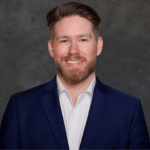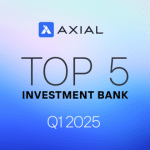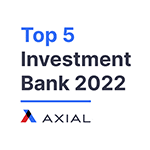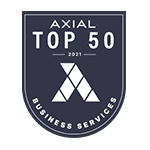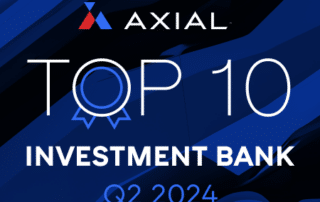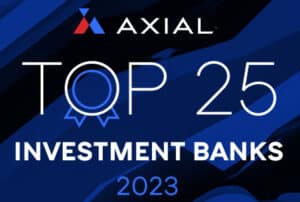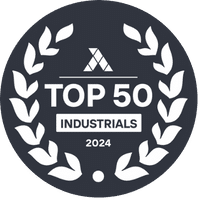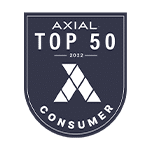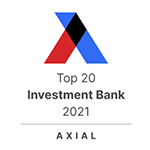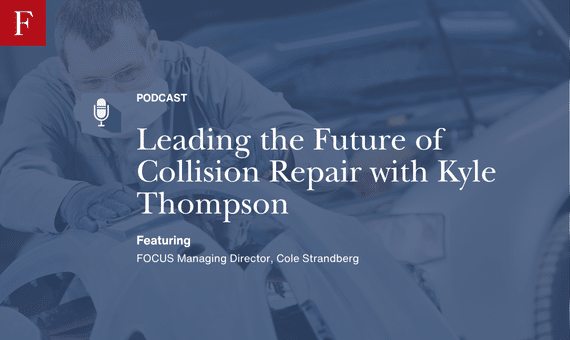
Leading the Future of Collision Repair with Kyle Thompson
On this week’s episode, Cole Strandberg chats with Kyle Thompson as they dive into Kyle’s vision for the future of I-CAR and the industry at large. What are the opportunities ahead? What does great leadership in collision repair look like today? And how does I-CAR plan to evolve with the fast-changing landscape of technology, training, and talent development?
Cole Strandberg: Looking forward to an awesome conversation. I know we were able to connect in a bit of a pre show call. Your name is one that I’ve heard just positive things around for many, many. So excited to have this conversation and talk about your wonderful, exciting, big time newish role. Looking forward to diving into that. Before we do, would love to hear a bit about your background and your career journey and how you’ve ended up in this seat today in your own words.
Kyle Thompson: Absolutely. If I was going to sum up my career in its entirety in just a few words, it’s certainly I’ve been blessed. You know, I’ve had the opportunity entering the time of of the collision repair industry and on the insurance side where people are transitioning from handwriting estimates to switching to computerized estimates and it sounds like a long time ago. In my head it was days ago. It’s amazing how quick it all went. But great opportunities. I spent significant time with progressive in leadership roles and then with USA and senior executive roles. Really focused on making sure that we were delivering a great product and service for USA members in the times that they had claims in that in that journey I was relocated a couple times. I had some great opportunities to take on side projects with startup organizations that really gave me a great perspective of what you can do when great individuals get together and decide to accomplish something. In addition to that, I spent some time in the in the several years ago running an independent collision Repair and you know, my time was there was fantastic. I was fairly young in my career and while it was super rewarding, I also it was a family owned business with many family members working in it. And I realized that my, my ceiling would be reached very quickly had I stayed down that path. Ended up also right before being blessed with this I car role, I spent time with Gerber Collision in Glass, really on the, in the sales department, vice president of sales. But I really spent a lot of time dialing in performance of or adherence to contracts and making sure that we were performing and delivering what we were committed, committed to contractually. So absolutely, absolutely thrilled. During my career, I did have the privilege of serving I car in many different ways. First, I was a member of an I car community in a committee in San Antonio, Texas. Really where we were focused back then on, you know, what class classes does the market need, what type of scheduling events do we need to get accomplished? And then working back and forth of how do we build out the the mission and brand of ICAR and CREF at the same time. And then I also got to spend some time on the ICAR board and rising through the organization spending term is board chair, then immediate pasture where I got to see really much more of the inner workings and how we decide in the line on what’s going to get accomplished and what do we want to deliver for the industry. Absolutely thrilled that I’m here today. You know, a lot of items that I’ve done in my career culminated in this. But I’ll tell you what I’m most excited about is my relationships at ICAR over the years and the quality of the ICAR staff really just got me so excited. I mean this is a dream job. You have an opportunity to make a difference. You know, what I CAR does is meaningful and anybody in their career should look for purpose or mission driven work. And I CAR certainly has it.
Cole Strandberg: Man, what a. What an amazing story to this point and obviously some of the most exciting chapters here to come in this new role at the helm of icar. Very, very exciting. You touched on this a little bit, but obviously such a well balanced, impressive career on the small operator business to the massive operator on the insurance side involvement on the I car side. What does this role represent to you and mean to you? Obviously a lot of weight on your shoulders, a lot of responsibility for ICAR as an organization. What drew you here to accept this role today?
Kyle Thompson: Sure. So, so one, you know, what I would say is when you read the two items that are behind me today, the mission and the vision. My own personal values align tremendously with the organization. When I look at the collision repair industry, I, I see thousands of people working very hard to accomplish the same things in different manners. And so when you have an aligned industry, it makes it so much easier to say I can get there and I can take, do whatever the next steps are going to be to help advance I car and advance the industry. And that’s really where the responsibility lies. You know, I car serves six individual segments of the industry. And by serving six segments, that means that at any given time somebody is probably wanting us to focus on something. And, and we do a lot of prioritization work, but we look for, to focus on items that align the needs of as many of the segments possibly can. You know, obviously collision repairs are the center of this because ultimately they’re the ones that are repairing the vehicles. So our job is to reduce as many obstacles as we can in the industry for them so they can accomplish what they’re best at. And that’s repairing cars.
Cole Strandberg: I talked to a lot of shop owners. It’s one of the coolest parts of this role, of my day job, of everything. And when we talk about the obstacles and the headwinds, our industry, we break it down into two buckets, right? The stuff that you, an individual shop, can control for yourself. And then there’s the stuff that’s more zoomed out, more macro, industry wide things. And, and every time that’s brought up, the I car organization is brought up as one of those forces for good trying to lead this industry in the macro at the right direction. So appreciate that tremendously. And, and to hear that color around what that role means to you is pretty cool. What has the transition into the CEO role look like? I know this happened in April, if my notes are correct, and we’re happy.
Kyle Thompson: To May, but right, right around that April, May transition.
Cole Strandberg: There we go. Talk to me about that transition.
Kyle Thompson: It’s been a whirlwind. You know, you, you always, I, I felt like I, as much as anybody else, had a good understanding of ICAR because of the nine years I spent involved with the board. And then, you know, I’ve taken ICAR classes my entire career. I’m pro level three. So you know, I understand if somebody gives feedback on a class, I know exactly what they’re talking about. But, but it’s just the opportunity that when you take a step back and you say, hey, this is a, this is an organization that impacts all and I now have the responsibility to make sure that it continues in a path that benefits each and every one of the segments that we serve. And it’s the gravity of that, that, that really as I sit in bed at night thinking about what all has to get done and I’ll tell you as much as we have gotten done, which is very impressive, but it’s, there’s a lot to still do for the industry. And you know, how do you prioritize that, how do you resource that and how do you deliver it in a way that it truly adds value? And those are the things that I sit there and I say if I was, you know, if I’m going to accomplish anything, it’s how do I impact those that are, that, that today on a grander scale, if we can align the efforts to impact a large number of our key stakeholders would be critical. And so I guess a better way of saying that is I want to deliver items, I want to deliver, I want to improve our training, technical training that we roll out the timeliness of doing it. I want to give items to the industry that they seek and ask for. One of the biggest challenges that I car has today is, is a lot of the training that’s taken by the industry is required by somebody. And you know, we want to, we want to flip that script and move it away from people are required to take training to. People are inspired to take training and let us work on the, on the development of curriculum and information that people truly need to properly repair cars and focus that. And if we can align that and we can deliver for the collision repair industry, we’re going to do phenomenal. And now it’s just moving it forward. When I look at folks like Bud center in our organization who has his pulse on the industry and Jeff Peavey, you know, they’re active every day, they’re, they’re being solicited and giving feedback on this is what we need to have. And we spent a bunch of time now going through that and saying what can we action today? What clarity can we provide to others? Sometimes there it’s misconceptions and if we’re not going to be able to do something, give a reason why and then explain where it sits on the, on.
Cole Strandberg: The path in the future, man, 100%. A lot of really impressive and big time and momentous things have been accomplished by ICAR over the years. But to your point, as an industry, we still have plenty of things to, to knock down here moving forward for the betterment of all. What kind of are some of those big hairy audacious goals, those BHAGs, as they say, that you would kind of put at the top of your list as you’re kind of taking the reins here and as you view how you want the industry to view ICAR and what you want your legacy at the helm of this organization to look like.
Kyle Thompson: Sure. You know, I would, I would first start out to say, listen, training. So I CAR is a training organization. We provide education and knowledge. We want to provide the most relevant information when shops need it. And a lot of times we’re, you know, we’re working with the OEMs, so if they have a new model that’s rolling out or a new technology that’s rolling out, we want to be on the, on the bleeding edge of getting that information and start developing course content. So when that vehicle does hit the hit the industry, we want to make sure that we can provide shops with the information necessary in order to properly and safely repair vehicles. And so when I think about that is how do we get further up the development cycle at an OEM to understand what we need to have prepared and be ready to deliver to the industry in time for when vehicles are actually released. Manufacturers, this is in their best interest as well, because they don’t want cars to go out and cars to sit because there isn’t a repair procedure or something, something is unsure and so the vehicle sits until it can be thought through or worked through. They want to make sure that shops have the information necessary to properly repair those vehicles. The last thing they want is for anybody to guess. And that’s the truth for everybody in the collision industry. Like, let’s make sure that we have the right information in the hands of the technicians that are actually doing the work. And, you know, when I think of, you know, what are items that we can do to, to pull the industry together. Listen, we spend a bunch of time with segment advisory councils or voice of customers items and when we get groups together from, not necessarily from the same segment but across segments, it’s a great opportunity. And I CAR is neutral. So that’s the best part about this, is we can have a very open discussion and there is no slant or edge for the direction that I CAR wants. We are just neutral. We are guided by our mission and vision, but we want to make sure that, that people’s voices can be heard and if there’s discussions that need to happen in the industry, I think I CAR is best to help facilitate those.
Cole Strandberg: Awesome, man. You’ve been in the industry for quite a while in different capacities. You’ve Seen the industry from different viewpoints. Obviously, today represents an interesting inflection point for shops across the country. It’s a weird time. What do you view some of the biggest changes and challenges and trends we’re seeing across the industry today?
Kyle Thompson: Yeah, you know, I would say that the acceleration, or the coined phrase technical tsunami is just incredible. The amount of sophistication in vehicle development out there today and the technicians that have to solve for it are completely. It’s a different skill set than what it was when I first started in the industry. And then, you know, when I think about shops, it’s, how do you attract talent in order to step in and fill the gap? We have an aging workforce today. And while right now, in this moment, today in October of 2025, some shops may be slightly down, we know that technicians are not rushing to this industry, and we do know that they are aging out. So whether at this moment it’s felt as much as it was a year ago, we do have a technician shortage in the industry that needs to be solved for. And I think I car is a great place to help do that. And I think there’s a lot of others that are stepping in that place. So I think about the technical challenges that that shops face and then the, the talent shortage that they’ll. That they, that they’re going to have and they’re going to continue to face until we get enough new technicians attracted to the industry.
Cole Strandberg: You know, I think our industry is one that’s so resilient. We have. We have headwinds often that we just switch the sales around and turn those into tailwinds. These challenges in innovation and technology, the expenses required for the equipment, the training, the knowledge required to properly repair these vehicles, creates opportunities, too. And how, how do you guys view kind of these opportunities? As we try to tackle the technician shortage with some of the sexier additions to our industry, the cleaner additions to our industry, like ADAS and EVs and these changing procedures, how do we put that in a positive light and use one challenge to solve the other?
Kyle Thompson: Yeah, you know, I think that. I think shops can help solve this. Certainly you have to have a culture of learning. And it’s not learning in your very beginning of stages of your career, it’s learning throughout your career. And so the embracement of new technologies coming out, it starts with whoever’s running the shop, and then it starts with individual technicians and the, you know, the opportunities to train and learn more and then apply those learnings out to the industry. The investments that shops have to make in training and equipment and is tremendous. And so if you build a culture where you’re going to capitalize on those investments and reap the benefits of it, it’s absolutely critical. And so I think that I CAR is doing a lot to try and attract talent, but I think that it’s only a small piece. You look at the work that CREF does with schools and their desire to help fund those and build those brands. You have a lot of others that have stepped in with apprentice programs, and it’s just, I think the industry will solve it together. What we do know, we know is that sometimes, like today, I car rolled out or is rolling out some apprentice programs. Shops want apprentices when they have work and. Or when they can commit the time. And so right now we’re working with how do we get shops to sign up for an apprentice today and start that development process? So when the work is there, they have a technician that is now ready to start repairing vehicles for them.
Cole Strandberg: A perfect example of turning a challenge into an opportunity, right? 100%, absolutely. It’s, you got the time now, you got the capacity. No more excuses to not figure out how to solve this problem for yourself. Handle that today. I love it. You know, by nature, I car is in the middle of everything from OEs and new technologies to the insurers to the shops. How do you balance keeping up with and staying in front of this innovation with also simultaneously staying true to the foundational mission of ICAR?
Kyle Thompson: Yeah. So, you know, I CAR’s mission is absolutely making sure that shops have the education and knowledge necessary to properly repair vehicles. But the acceleration of that is just astronomical if you look at what has occurred. You know, think about today shops. A couple years ago, you know, one welding class was sufficient for everything they need. Now there’s multiple welding classes and there’s a new welding class that’s going to roll out called mixed attachment methods, which is commonly referred to in OEM repair procedures because it needs to occur, because we need to fix vehicles in a safe and proper fashion. You know, when you think about, you know, credentialing and training, it’s all about just knowledge. And, you know, taking the training is the. Is. Is how they gain knowledge, and credentialing is the verification that the knowledge exists or they have committed the time to do so. You know, and then we have to get there through content availability. You know, how do we. I mentioned it just a couple minutes ago, but how do we make sure that we’re on the. On the bleeding edge of receiving information from OEMs and being able to develop course content that is digestible for when new technologies hit. You know, today I car has 467 courses in its catalog. Last year we had, in the last 12 months we’ve had almost 1.5 million courses accredited. That’s a huge count. And you know, people are. And that number is up substantially year over year. Some of it is we rolled out some new content or the new academy classes. But there is a need and a willingness to digest knowledge or to gain knowledge and information by digesting I car training. And that’s where we’re focused. You know, today 325 of those courses are online, 23 of them are offered virtually. And then the 15 that are hands on skills development, which is where they actually gain knowledge and then demonstrate the capability all in person. So really just figuring out what lines up best to deliver a new technology and how do we get it out there in front of people.
Cole Strandberg: Just given your exposure to ICAR for a decade plus as a board member, and I’m sure long before then, as someone involved in committees, you’ve seen a lot of evolution on how that education is delivered, I would imagine, and we’re seeing it every day. Further, I would imagine how, how has that content and education delivery evolved and how do you anticipate that continuing to evolve moving forward?
Kyle Thompson: Oh, I love this question so much and let me tell you why. So for the longest time, if you were going to take an archive class, you showed up to a building, either a shop or a commercial space, and somebody who worked all day long is teaching the class and at the end you would take a test to see if you absorbed it and you would move on your way. That’s great. But that isn’t how students or apprentices or those enter the industry today learn. It’s just not the, you know, they need more interaction as they go this year at the, towards the end of the year. And then next year with the rollout, you’ll see new courses rolling out that are using advanced methods to engage learners as they go through classes. And why this is important is we sometimes receive feedback as, hey, you know, I’m sending a structural level three technician through and he already knows this information. We’re going to give folks the opportunity, like let’s pick up the course or let them work through the course in a way so they’re not going back and having to repeat information that they already know. If they can show their proficiency as they’re going through the course, it’s Just going to move forward to where we think the next item that they need to learn is, why is that important? People spend a lot of time taking classes. You know, back in the day that was a three to four hour journey of going into a, going in and taking a class online. And even, even 10 years ago you were just doing it online, but it was largely the same content. Watch a few videos and go. This is the opportunity to demonstrate in some instances using AI and other technologies, but really trying to figure out a way that we can deliver content in a way that it’s easily absorbed and people walk away with the information and they feel like it added value. And that’s really the key is how do we deliver content that people, when they get done, say, I’m really glad that I took that class. And that’s what we’re working towards. You’ll see these new courses coming out. We have them under the ALE technology, which is advanced learning Education. But you’ll see those come out. They are replacing some of the older items in our catalog. As we look to start refreshing our course catalog Today, the average ICAR course is refreshed on an every four year basis. So 48 months and I think about 98% of them are done that way. But there’s, there’s an opportunity to advance that forward. You know, if something, how many things change and at the speed that we were just talking about of technical change, you know, four years probably isn’t enough. And so we have to find ways that we can speed that timeline up and, and make sure that when somebody pulls up an I CAR class, it’s the most relevant information that they could receive anywhere.
Cole Strandberg: A great evolution, a great goal to continue to execute on. Right Efficiency, quality, ease of delivery, all, all good things. And to that obviously the content that I CAR is putting out for training by nature is going to be better than it ever has been. Just has to be right. There’s a ton of investment into that. What do you view the current state of adoption of technician development in this training being and how do we improve that as an industry? I think everyone benefits by having our technicians and our businesses producing the best results possible on the vehicles we’re repairing. How do we make sure that not only do we lead a horse to water, but they drink?
Kyle Thompson: Yeah, I’ll tell you, we’re still working on leading the horse to water in many instances. So I CAR today engages with about 13,000 shops, 10,800 gold class shops and then some that are working towards Gold class training or just Taking individual classes that interest them. That’s a small segment of the overall collision repair industry, depending on who you want to use at the source. But we believe that there is significant headway that can be made in attracting new shops into the I car portfolio. And because they really need them, at best they’re receiving collision repair training elsewhere. Maybe it’s only through OEMs, maybe they’re. They’re getting it from other suppliers, wherever they’re getting it. That’s fantastic. We want, and it’s most important that people are trained if they’re touching a care a car. My biggest fear is that a lot of those shops are not actively engaged in training. And those shops are out there and putting vehicles back on the road without the proper repair methods and understanding of how that vehicle really should have been fixed. And that’s a tremendous risk to all of us because one black eye on a shop is a black eye on all shops. When publications get done and there isn’t a content, oh well, they weren’t ICAR or they were icar. It doesn’t work that way. The industry takes hits for misses from organizations that may not be training.
Cole Strandberg: And I think the industry has evolved that mindset to fully buy into the whole a rising tide lifts all boats mentality. Right. We are all here on the same team. We’re really not competing against the shops down the street anymore. We’re competing against everyone. It’s the collision repair industry versus the world. We got to stick together and improve and share information, share insights, encourage open collaboration and discussion across the very important pieces of our business. And a big part of that is the talent shortage. And you mentioned it. I want to double click on that a little bit too obviously. Every shop individually has a tremendous amount of responsibility to solve the technician shortage for themselves. How do you view ICAR’s role in addressing the industry’s tech shortage from the macro?
Kyle Thompson: Yeah, no, I greatly appreciate that. First of all, I’ll say that in the last year and a half, it was a three to four year journey of rolling out all of our new Academy programming. And Academy programming is all new content for the collision schools that exist out there today. And for that shops can use if they want to develop an apprentice program. I car took it one step further though, because the creation of content does not create new bodies for the industry. It may get people excited, but it may not create new bodies for the industry. So ITAR went out and worked with the Department of Labor to get a approved registered apprentice program, which is a Department of labor approved program where folks will gain if they sign up to take an apprentice and go through the training to do this. They’ll get course curriculum for a short period of time because there’s a grant that goes along with this, that’s helping pay for some of this. But they get the course information and learnings provided to them. They’ll get a structured guideline of this is what a mentor does. And when you even think about how do you pick the best mentor in their shop? The best mentor in the shop may not be the person that’s running the highest production. As a matter of fact, your shop may not be able to afford by taking that person off to be a mentor because you need the production they produce. But how do you identify the right person to be a mentor? How do you structure their day so they can properly be a mentor? Also enabling further growth of somebody else that exists. And then finally it’s a two year program that gets them through. At the end of the year, it has regular progression of wage increase as the person gains skills. They’re engaged because they’re doing something different. They’re learning more, they’re seeing, you know, some, some pay changes in what they do and they’re, and they’re getting through a rewarding program. Shops that invest in this will be so much further ahead if you find the right person to help lead this. You know, I think, yeah. Yesterday I was talking to a gentleman named John Melendez at JDM Collision. And John’s a just a tremendous individual, but he was talking about, listen, I need apprentices. I need them when I’m busy, I need them when I’m not busy because I need to make sure that when I do get busy, I have people to repair vehicles. And it’s just so inspiring. Like the investment of training, the investment of equipment, and now the investment of the future that shops like John’s are making is just tremendous. Listen, ICAR wants people to sign up for this registered apprentice program. And I know it’s a big, it’s a tough asking commitment if you’re not ready. If a shop isn’t ready to become a registered or work with a registered apprentice program, that’s okay. But do something, go out, engage with a technical school in your area, find a way to engage with the community and really look to build the brand of the collision industry as a whole. And that, like you said it, you know, high tide is going to raise all of the ships. But that, that promotes our industry in a way that, that’s just so tremendous. I actually Have a son that went through, you know, he went through a trade school in high school. It was part of his high school program. And I’ll tell you, it was an interesting thing when with him on career night as we went through and he’s trying to select which trade he’s going. We visited I think five different trade rooms or their pitches. And the very first one that we went into was diesel repair. And that was the most organized presentation that I went through. What they showed was engaging to the students. It got them excited. They talked directly to the students, but they also talked to the parents about hey. Because parents are helping guide and influence where kids are going to spend the next four years of their career or their career in the future. And as they’re going through, they were so engaged. You know, the next room we went was plumbing and my son knew he didn’t want to be a plumber or didn’t want to learn plumbing. So we sat through there and it was a little bit organized. Then we went to the Collision one. And what I’ll tell you is the Collision one is very well equipped, the shop is great. Everything else. But they didn’t clearly have the support of the industry of that room. It was a few students and the instructor. It wasn’t the industry showing up. And as I sit there and I’m already in the collision repair industry at this point and I’ve spent time in that school talking to him and you know, it’s. What I would say is that there’s, there’s just an opportunity for us to show up in any way that makes it meaningful, that helps attract talent to this industry and promotes the collision repair industry as a fantastic career. Because it is. You look at, I mean, there’s so many options for folks entering the collision space that, that their career can really be super fulfilling over a 30 or 40 or 45 year commitment.
Cole Strandberg: Such an advocate for that. Of course. Yeah. Tremendous opportunity for people in the collision repair industry. Wherever you want to go, wherever you start, it doesn’t really matter. You have so many examples of executives today of amazing senior technicians, of entrepreneurs who all started at the bottom or whatever kind of their path into the industry was. And that’s what I find very, very cool about this industry is once you’re in, your ceiling is just unlimited. Wherever you go, you can. Yeah.
Kyle Thompson: I love the fact that, you know, once you’re in a collision repair environment and you see the quality of the technician, you see what they have to go through in their day to day jobs to properly repair Vehicles. It is, it is a, it is a technical career. There is, there is, this is a, this is prideful work. It’s work that’s meaningful, it’s noble and we just need to present it to others outside of our industry in that sense.
Cole Strandberg: Same way, no question about it. And you mentioned that little rotation where students are essentially getting pitched on a potential trade to pursue. To me that highlights the importance of a single conversation like somebody, multiple students that day, their entire life trajectory changed because one group had a better pitch or were more prepared or showed up as an industry more than the others. And that puts it on everyone in this industry the importance of showing up. And you mentioned John Melendez. Shout out to John, great friend, great friend of the show. That’s an example of showing up. I mean that, that dude goes out way to show up to stuff like that all the time. Bringing on apprentices. The industry would be a much better place if we had a bunch more John Melendez is out there and I, I think we do. We just got to get everyone engaged like that.
Kyle Thompson: He’s gonna love to hear that. But to bet 100 agree with you.
Cole Strandberg: Awesome, man. Well, I mentioned it earlier, I, I car sits in such a unique position. You’re the glue that’s holding shops, OEMs, vendors and everybody in this entire ecosystem kind of together. How do you view that role and that responsibility representing ICAR?
Kyle Thompson: Yeah, no, I1 the gravity of that role is tremendous because we, we truly are the neutral party and really holding the six segments or bringing the six segments together. What I’d say is we do it in a of couple, a couple ways. One, we engage with individual segments by themselves and so you know, we’ll have segmentary advisory councils. That’s had one yesterday I sat through. I’ll tell you, I’ve never seen a three hour time period fly through so quickly because the discussion is great, the feedback is direct. I mean there’s and there’s great feedback and feedback of this is what we need different from ICAR and we need it to change now. And we’ve talked about this before and what’s going on and you know those questions should net should never be asked. We should always provide a circle back and make sure that people understand. But it starts with let’s meet with individual segments and get common themes or opportunities that I car can help work towards. Then you, then you expand it into a larger group. So you move from, you know, a segment advisor council to a member advisory council. And how do you bring all the six different Segments of I CAR together and bring up those conversations and have real conversations where people are able to pressure test what’s being said. Because one thing about segments is you’ll get a perspective, it’s their perspective of the industry and you’ll get a completely different perspective if I move on to a different segment because that’s where they sit and that’s where they exist on day to day. But it’s great because you pull these, these folks together and you get this memory advisory group and all of a sudden things are being pressure tested and you figure out, okay, here’s where ICAR can help solve items and. Or I’m hearing a common theme, I’m hearing a common theme of ICAR needs to deliver more technical training. You know what, I CAR can do that. So let’s go out and figure out now how do we do it, how do we fund it, how do we prioritize icar? You know, we’re. While it’s a large organization, it is not large in grand scale and we get the absolute most about our employee base. So how do we prioritize the work that’s most important that the industry needs and it continues in other fashions. We do a lot of voice of customer studies. We do a lot of, of, you know, any industry event ICAR wants to show up on, we want to meet and, and engage with our customer base anywhere that they’re going to be. Because it’s important. Listen, nobody has free time and so if we can show up somewhere and receive feedback that maybe somebody wouldn’t have taken the time to deliver otherwise, we want to get that. And then it’s a, it’s incumbent upon ICAR to take that feedback, centralize it and then work on the highest themes and, and then get back to the industry as of this is what we’re doing and this is what we’re delivering, man.
Cole Strandberg: It’s an interesting component of the industry where you have a small really segment of folks that really get involved, but you have a much broader segment of folks who have feedback and have criticism and have compliments. Right. And as an organization, ICAR is they get opinions. Right. They get feedback. They’re positive, constructive or otherwise. If you’re speaking directly to call it a shop owner out there that may or may not be somewhat in the periphery involved with icar. How can they make their voices heard and actually be part of some positive change for the industry?
Kyle Thompson: Absolutely. So we recently updated all of our based on feedback received, recently updated the ICAR website to provide clear understanding of our governance model. But we also broke out there and dedicated space to the individual segment advisory groups. There’s the ability to send feedback directly off the website, but just engage. We have, we have team members all across the country, and if you need something, reach out. ICAR will make sure that we engage you in whatever discussion you’d like to have. We will try and solve the largest problems that we can for the industry. We will not be all things to everybody. And we had a conversation yesterday during that segment advisor group. And you know, these are largely the same people that show up all the time because they’re so committed to the industry and they’re so committed to ICAR and they’re so committed to advancement. But how do you reach all the others? You know, we, we, a lot of us spend times and we go to various conferences and everything else, and for the most part, it’s usually the same people at each one. And how do we start attracting other people to join? And you know, on a local level, I think that it’s. Some of that is shop to shop. It’s. It’s iCar to shop. It’s like, let’s find ways that engage. And, you know, ICAR will do promotions where we’re trying to get. We’ll offer a class for free because we want somebody to see, hey, The ICAR of 20 years ago is not the I car of today. And, and like, come and see what’s out here today. And you know, it’s, it’s not a, it’s not an option anymore to train if you’re not, if you’re not training with anybody, it doesn’t have to be with icar, but if you’re not training with anybody, you’re putting people at risk. And it’s simply not. It’s. It’s simply not okay to do that.
Cole Strandberg: Yep. The stakes are too high. The industry is too different. It doesn’t work anymore. This is a different business than it once was. It’s funny you mentioned the same folks showing up over and over again. It brings me back to a conversation on the podcast I had with Jill Tuggle of Out of Texas with abat. And, and we sort of landed on the fact and found it fascinating that the best operators and the best shops are the ones who are showing up everywhere. And it begs the question, are they the best because they’re showing up, or are they showing up because they’re the best? Either way, it’s a group you want to be a part of. So do it. Get involved. And that’s Very applicable with ICAR here as well. Get involved, make a difference, improve yourself while you’re doing it. Now, obviously I car is a whole lot more than one man. Your predecessor did a great job, had the opportunity, phenomenal, know him over a number of years as well. Well, but you’re coming in here, you’re at the helm. A big part of your role is shaping and refining and ensure that ICAR is following this vision, whatever that looks like five years from now. How would you define success for icar? Where do you want to see the organization?
Kyle Thompson: Yeah, you know, I would say first, you know, I. Cars continue to evolve over the last 46 years and almost 47 here in here in a couple months. But you know, it’ll continually, it’ll continue to neutrally serve all the segments of the, of the industry and you know, collision repairs, OEMs, insurers, education, suppliers, related services. You know, what I would say is my immediate goals. And I spent the first, my first months here really doing listening. And it was listening first internally. Like let me understand, where do we see our opportunities? And it’s both internal opportunities with the way we function and then external opportunities of, you know, what feedback have we gotten that we haven’t been able to action or haven’t been able to solve? And then it’s external listening as well. And you know, what are, what are, what are the folks that are engaged with ICAR today have to say? How do we engage the ones that aren’t there and why aren’t they engaged and how do you gain that knowledge? And, and that’s probably the toughest feedback to receive because trying to, to attract. Again, it’s the same people that show up, up at most events, which is wonderful because they’re super engaged and they’re doing tremendous quality of work for the, for the benefit of the consumer. But we need to find the ones that aren’t engaged. And so really working with our sales organization and, and boots on the ground to figure out how do we engage with shops that today are not active with icar. And so that, that it starts with a, with the effort to meet, meet face to face or, or reaching out through our national call center. But it’s really so much more than that is how do we figure out how we engage them on a meaningful level to get buy in or at least understanding of what are they doing if it’s not with us. Oh, go ahead, please.
Cole Strandberg: No, no, after you. I’m sorry.
Kyle Thompson: I was gonna say, you know, and then so what is, what Is Kyle really, You know, we were talking about next to three to five years. We got to shorten the window. I mentioned a little while ago that, and we’re very proud because, you know, it’s on a 48, 48 month rotation on course content today and that’s 98% of our classes. But 48 months sounds like a really long time. You know, 48 months ago I probably, I think I had two kids in high school. Now I don’t have any kids in high school. So it’s crazy how quickly that time period goes, but how much changed during that time period and how do we make sure the course content is relevant real time? So people get value when they invest the time. And when people take training, it’s an investment. They may be doing it on a shop’s time, they may be doing it on their own time, but it’s investment of time. And all of our time is committed more than we probably have. And so if somebody’s spending the time with icar, they should get the maximum value out of that time and the maximum knowledge as we present the information to them. So past that we got to figure out ways to change the delivery of our content. I mentioned the new methodologies that we’re going to roll out and do I expect everybody out there is going to go out and get a pair of virtual reality headsets so they can go through and actively, you know, actively do a training class? No. It is neat to see though that you can attract people when you, when you demonstrate those type of courses and capabilities when you’re trying to attract people, especially of a, of an online or video game error that, you know, this is a good, it’s a good ploy. It also gives people an opportunity to demonstrate an environment that they wouldn’t be able to be in otherwise. But there are so many other ways, whether it’s, you know, and gamification isn’t the right word any longer, but there’s so many other ways that we can deliver content in a way that it’s meaningful and engaging. It’s not just sitting there, click, click, click as you go through content waiting to get to the test so you can, so you can demonstrate proficiency and move forward. We want it to be very meaningful for the learner wherever they’re at in their stage of the learning journey. And then, you know, last but not least, it’s working. How do we bring the six segments together? We spend a lot of time on this. My predecessor you mentioned, John Van Alstein, an incredible, incredible individual, a mentor And a personal friend. But you know, John really pushed this and got everybody to the table over this period of time. But how do we, how do we engage on in more meaningful ways and how do we deliver items on a more timely basis for the industry? And that’s really where my focus will be over the next three to five years as we also develop a new plan for, for the next, next period of time.
Cole Strandberg: Man, I better let you run. You got a lot to get going. No, that’s an awesome list of goals and really beautifully laid out and I think you have the support of the industry behind you and getting those goals accomplished. And we’re all, we’re all cheering you on and so appreciative of your time here today to speak with with not only me but to the industry. A lot of our listeners are shop owners who are either, you know, I car gold in a lot of cases or it would benefit them to do so. So I know we all appreciate you taking some time here. I want to zoom out on one last kind of big question before letting you run and get back to work. And that is as an industry, you obviously have to have a real degree of positivity to be in this role today. That’s your job, is to be positive and see where the opportunities are going to lie moving forward. What gives you the most hope, what gives you the most excitement about where the industry is headed here in the near to mid to long term, you know, when.
Kyle Thompson: And so it starts with this. Well, the main thing is through the listening and we get, you know, internal feedback, external feedback. Everybody wants the same thing. Everybody wants the, and not discussing the price or availability or anything else, but everybody wants the same thing thing. We have an aligned industry, all six segments. We have an aligned industry that wants to deliver quality, safe repairs to the consumer. And when you have an aligned goal, how can you not be excited? I mean it’s, it’s our opportunity to help gain that alignment and help advance it forward. But there isn’t anybody out there that says I want to fix a car improperly, not one person. And so when you have that and there’s, you know, I car’s ability to, to stand here and help help push this forward as we work towards that, make sure that every has the, has the knowledge necessary in order property repair vehicle. That’s our space. And so the opportunity to influence that in any way that I possibly can is just incredible. And that’s what I’m most excited for is what more could you ask than the line goal that Everybody is rowing in the same direction. It’s just differences of opinion of how we get there and what steps to go first. But everybody’s aligned and we’re all in.
Cole Strandberg: This industry is tremendously powerful together. If we’re rowing the boat in the same in the right direction, there is no stop stopping it. And I echo that sentiment. Very, very positive on the future here. Kyle, you shared a ton of resources that I CAR offers here today. Rather than pop quiz you with all sorts of requests for links, what I’m going to do is work with you and your marketing team to get a bunch of links to include in the show notes for folks who want to learn more about icar, the various programs that they can get access to with ICAR to kind of put a bow on it though for folks who do at a high level want to learn more about I car, how to get involved or get in touch with you and your team, how can they do so?
Kyle Thompson: Absolutely. We’re here to serve. Awesome.
Cole Strandberg: Fantastic. So I will include a bunch of links in those show notes. Load me up. But Kyle Thompson, an absolute pleasure to speak with you here today. Appreciate you taking the time. Congratulations on your new role and the industry is here supporting you.

